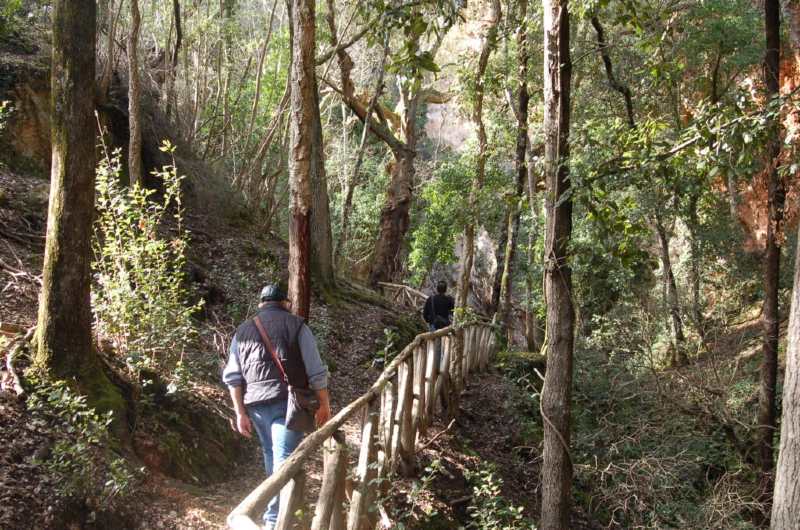The Montioni Nature Park
A nature area included in the Val di Cornia park system.
The Montioni Nature Park
a naturalistic area included in the Val di Cornia Parks system covers about 7000 hectares between the Livorno and Grosseto borders in the municipalities of Campiglia Marittima , Suvereto and Follonica . Its heights, which exceed 300 meters above sea level, are covered by dense Mediterranean scrub dominated by holm oaks. A network of ancient trails, once traveled by lumberjacks, charcoal burners, shepherds and hunters, now offers itineraries for hiking, biking and horseback riding.
The territory of the park boasts a remarkable historical-archaeological richness. Here there is evidence of Etruscan and Roman settlements, later overlaid by medieval structures. Notable sites include the remains of Pievaccia, the ruins of the Old Montioni Castle, the ancient baths of Montioni, and the alum quarries, valuable examples of medieval archaeology. This forest, traversed by centuries of history, preserves numerous tales.
One of the best known stories is the one related to Elisa Bonaparte, Napoleon’s sister, who was appointed to govern the Principality of Piombino, a strategic point for the control of navigation to Corsica and the northern Tyrrhenian Sea. It was she who, in the early 19th century, gave birth to a mining village linked to alum quarries. This resource, already used since 1474, played a crucial role in the economy of the area under Elisa’s rule. The village included miners’ dwellings, alum processing ovens, the princess’s residence and a private thermal bath fed by 31-degree sulfurous waters. Today only the walls and part of the floor remain of the bathhouse, in the details of which it is still possible to identify the location of the two pools made in Canova’s workshop.
The park
holds other stories that still seem to vibrate among the windswept trees. They tell of the lives of the miners, coachmen and workers who plowed this landscape of quarries and tunnels carved into the rock. One way to rediscover their lives is to walk the Poggio Saracino Trail. Starting from the village of Montioni, you can see buildings from the Napoleonic era, open-pit and underground mines, furnaces and systems for transporting aluminous stone. The trail then leads to the viewpoint of Casa Saracino, before descending through some old coal mines. The trails on the valley floor pass through forests dominated by turkey oaks, accompanied here and there by ash trees and less frequently by cork oaks. Climbing to the heights, thick ilex groves with their characteristic dark shady environment extend. Here and there strawberry trees and lentigines emerge, adding further density to the landscape.
This wilderness is not only fascinating from a botanical point of view but also fundamental to the wildlife that inhabits it. The park is home to a wide variety of animals: ungulates such as fallow deer, roe deer, and wild boar abound; other mammals include weasels, foxes, porcupines, hedgehogs, and probably the wild cat. Small mammals include midges, dormice, mustioli (the smallest mammal in Europe) and quercini. Bats also find shelter due to the presence of natural cavities, large trees and ruins. Finally, the park is home to numerous birds of prey. Diurnal ones include the short-toed eagle owl, buzzard, sparrowhawk, honey buzzard and kestrel; nocturnal ones include the scops owl, little owl, tawny owl and barn owl.

